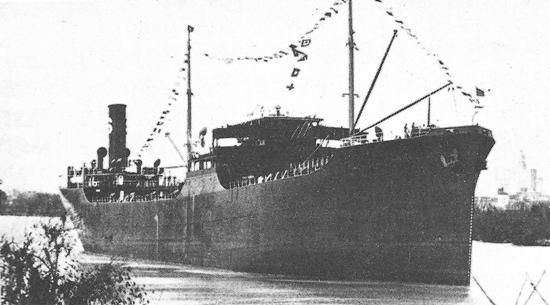by Bruce Wells | May 21, 2025 | Petroleum History Almanac
Marketing icon “Dino” and friends introduced children to wonders of the Mesozoic era courtesy of Sinclair Oil.
Harry Ford Sinclair established his petroleum company in 1916, making it one of the oldest continuous names in the U.S. energy industry. Appearing among other Sinclair Oil Company dinosaurs during the 1933-1934 World’s Fair in Chicago, “Dino” became a marketing icon whose popularity with children remains today. (more…)
by Bruce Wells | Apr 28, 2025 | This Week in Petroleum History
April 29, 1942 – Tanker SS Mobiloil torpedoed in Atlantic –
A German U-boat torpedoed the unescorted steam tanker SS Mobiloil (spelled in some reports as Mobil Oil) in the Atlantic northeast of the Bahamas. During multiple torpedo attacks, U-108 surfaced and shelled the 10,000-ton tanker owned by the Socony-Vacuum Oil Company of New York.

The Socony-Vacuum Oil Company tanker SS Mobiloil at its 1937 launching in Chester, Pennsylvania. Sunk by U-108 in 1942, the ship had not waited to join its assigned convoy. Photo courtesy Mobil.
After putting up a valiant defense, the tanker broke in half and sank, according to Ericwiberg.com. All 52 crew and passengers were rescued after about 86 hours in lifeboats, and the ship’s master was later convicted of violating convoy routing orders.
“The pressure of the convoys reached a peak in March 1943, when 98 ships were sunk,” adds the National Museums Liverpool. “Once again, the Allies appeared to be on the brink of defeat in the Atlantic.”
Learn more in Roughnecks of Sherwood Forest. (more…)


